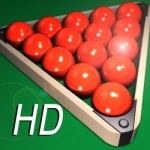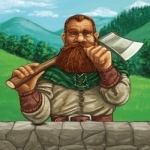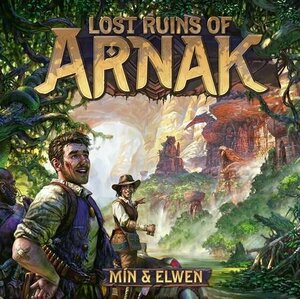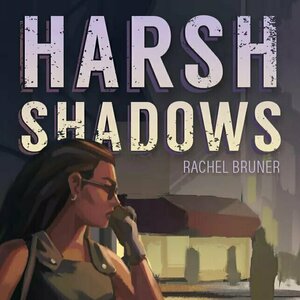
Call of Duty: Zombies HD
Games and Social Networking
App
Featuring 2 incredible Zombie maps and a host of iPad-specific improvements, Call of Duty®: World...

Star Wars: Rivals™
Games and Entertainment
App
Fast-paced, competitive shooter set in the Star Wars™ universe! Confront your rivals in the first...

Pro Snooker 2017
Games and Sports
App
Following the worldwide success of its sports games iWare Designs brings you Pro Snooker 2017,...

Glass Road
Games
App
Glass Road is the official digital version of Uwe Rosenberg's Glass Road board game. STORY: The...

What The Fox?
Games and Entertainment
App
What, The Fox? is a challenging puzzle adventure filled with funny foxes where the goal is simple:...

Cartooner: The Fast & Furious Game of Drawing Comics
Tabletop Game
Cartooner is a new experience in drawing games, a game that combines storytelling and drawing. It is...
Purple Phoenix Games (2266 KP) rated Lost Ruins of Arnak in Tabletop Games
Feb 7, 2021
Players, or “archaeologists” as the game coins them, will have only 5 rounds to explore as much of the board as possible, which includes a hidden temple as well as the jungle proper. At the end of the 5 rounds, players will add up all victory points they have obtained from the temple, any treasure they have left, points on any cards collected, and guardians they have overcome.
“Lost Ruins of Arnak” takes place on, well… Arnak. It’s a fictional jungle that is teeming with wild animals and guardians which keep watch over various treasures all over the expansive island, from here forward referred to as the giant game board. These guardians appear when you explore a new jungle tile for the first time. They attack only if you stay in the location longer than a turn OR if you return to the location on a subsequent turn. If you eliminate a guardian, they provide a couple victory points towards your overall total at the end of the game, and a slight bonus when collecting artifacts from other locations later. Being attacked by a guardian isn’t the end of the world, but can have detrimental effects on your personal deck of cards if you fail to overcome a guardian too many times.
While in the jungle, you may place a single meeple, or “archaeologist” on your turn to discover a new area, or visit a previously discovered one. These new areas contain a guardian and some sort of gold amount or trinket (idols, artifacts, or jewels). These items can be used to push your token further through the hidden temple (see below) OR to purchase cards to improve your play deck going forward. While navigating this mysterious jungle can seem exciting at first glance, you have to be careful not to let your gold fever take over, as it may leave you with minimal points by not using some worker placement to explore the mysterious temple ruins further.
While the jungle takes up a majority of the board, there is a temple which players navigate through simultaneously on the right hand side of the giant board. While it isn’t as visually appealing as the jungle portion of the board, it serves by far the highest purpose by scoring victory points. As your token travels through this temple, more and more treasure (victory points) await. It is not suggested in the rulebook, but should be noted that failing to spend ample treasure to work your way through the temple is almost a sure-fire means of not having a chance to win the game. The mechanic of exploring the temple is unique, but can be costly in terms of managing your resources properly. In my opinion, this takes away from the luster of traversing through a hidden temple and finding as much fat loots as possible. Rather, it feels like another board game I own, where you are furiously chucking dice just trying to get through with no time to look around.
The final mechanic of the game, which, as I read reviews myself prior to purchase, thought would be more prominent, is the deck building mechanic. You are provided a few cards at the start, which is similar to most any deckbuilding game. These basic cards are your first few resources to use for traveling around the board OR for their monetary value in either gold or scrolls. Using the cards for travel allow you to explore different levels of the jungle on the game board. The lower areas of the board require less travel points, while the more lucrative spaces higher up in the jungle require more. To get more travel points, you will need better cards from the decks provided. By using your gold, also an aspect of each card, you may purchase stronger cards from the supply. So, there is a balance you must find between using your cards for travel or for purchases each turn. This can be very limiting with only having the 5 rounds in which to play.
My final thoughts: I am a total sucker for pretty much anything that says the words “deck building” on them, and this game was no exception. I went into this game thinking there was going to be this new way of using a deck building mechanic to also explore a really well crafted game board. I could not have been more wrong. The deck building aspect got so lost in the other mechanics, that I felt like I rarely had the opportunity to actually build my deck. After 3-4 plays of this game, with varying player counts from 2-4, I always ended up with a deck no bigger than about 15-20 cards. When I think deck build, I think of those powerhouses like Marvel Legendary, Ascension, or Star Realms where you are really transforming your deck into a large deck by the end. On top of that, most highly regarded deck builders require you to strategize somewhat in which cards that you buy to compliment your current deck further. Arnak completely leaves both of these elements out. Most times I found myself only able to purchase 1 card in the supply due to lack of resources that I did not have any choice in how that card would compliment my deck or not. It was merely just collecting a card to try and give my deck any sort of a distinct advantage going forward. Now, don’t get me wrong, like the game board, the artwork on the cards is stunning. By far this saves the poor mechanism of the actual cards themselves.
To me, the amount of mechanisms in the game is what gets in its own way. Its that classic, everything but the kitchen sink expression. The exploration gets in the way of the deck-building, which gets in the way of the worker placement, which gets in the way of the resource management. When I found myself wanting to build my deck, it was more crucial that I move up the temple one step. When I wanted to move up the temple, I was missing a certain idol, so I had to resort to wasting cards for gold to purchase a card for my deck that I really didn’t want. So while I think the premise is really thrilling for what this game could have been, in my opinion it just fell short. I left me wanting to explore the upper part of the jungle I never got to. I left me wanting to look at more of the artwork on the cards I never was able to purchase. In the end, I made it to the top of the temple. I couldn’t wait to enjoy my heaping pile of fat loots that awaited my studded archaeologist. However, once I turned over the treasure token, I only acquired another measly 12 victory points. This feeling left me wanting more from this game that was so hyped for its gameplay. I no longer felt like Indiana Jones, and more like I was in a bad B movie hoping for a better acting career.
Purple Phoenix Games (2266 KP) rated Harsh Shadows in Tabletop Games
Apr 20, 2021
Disclaimer: We were provided a copy of this game for the purposes of this preview. The pictured components might not be finalized, and could differ after a successful Kickstarter campaign. -L
Harsh Shadows is a solo card game of hand management, grid movement, and deduction where you are an agent working to collect evidence necessary to apprehend an enemy spy. To setup for a game, randomly place the 9 Location cards in a 3×3 grid. Prepare the Discovery deck as described in the rules, place 1 face-down Discovery card to the right of each Location, and place the rest of the deck off to the side of the grid. Shuffle the Confiscated Item cards and deal the appropriate number to each of the Case File cards – 3 to Evidence, 1 to Red Herring, and 4 to False Leads. The Spy card is placed on the upper-left-most Location, and your Agent card on the lower-right-most Location. Shuffle the Spy Movement cards, and the game is ready to begin! It should look similar to the picture below.
The game is played over a series of rounds in which you will be moving your Agent, performing additional actions, and then moving the Spy. The goal is to track down the Spy, with the correct evidence in hand, before the Spy is able to flee the scene. The first thing that you will do each round is to move your Agent. You may only move to a Location that is adjacent or diagonal to your current Location. Once you move to a new Location, you will draw the top Discovery card from that Location. Discovery cards will either be Items, Clues, or Bombs. Items are collected as potential Evidence, Clues are used to reveal Confiscated Items from Case Files, and Bombs force you to discard a card from your tableau. After you have moved and collected a new Discovery card, you may perform any/all of these additional actions: Use Clue Cards, Place the Tracking Bug, Track the Spy, or Use your current Location’s ability. To Use Clue cards, you will discard a number of clues in order to reveal a Confiscated Item card from a Case File. The Confiscated Items under the Evidence Case File show the 3 items you are required to have in hand to apprehend the Spy by the end of the game. The item under the Red Herring, if you have it in hand at game’s end, will cause you to automatically lose. The 4 items under the False Leads will neither help you win, nor cause you to lose – they simply offer fodder for you to discard when necessary.
Another element required to win the game is to place the Tracking Bug on the Spy. On your turn, you may place the Tracking Bug at your current Location card – if the Spy moves to the Location on a future turn, they are considered to be ‘bugged’ and the Tracking Bug is live! Twice per game, you are allowed to Track the Spy. To do so, you will look at the top card of the Spy Movement deck, and return it to the top. This just lets you see to which Location the Spy is about to move. And finally, you can use your Location’s ability. Once you have taken as many of the additional actions as you want, it is time to move the Spy. Reveal the top card of the Spy Movement deck, and move the Spy in the appropriate direction to a new Location. At the Spy’s new Location, add a Discovery card to its pile. Play continues in this manner until either you make an accusation, or the Spy escapes. In order to make an accusation, you must have Evidence cards in hand, the Spy must be bugged, and you must be at the same Location as the Spy. When you make an accusation, you will reveal any remaining cards under the Evidence and Red Herring Case Files. If you have the 3 matching Evidence cards, you win and apprehend the Spy! BUT if you have the Red Herring card, or you are missing any of the required Evidence cards, you lose. If you haven’t made an accusation in time, the Spy could escape, causing you to lose the game as well – I’ll leave those details for you to discover on your own!
In theory, Harsh Shadows seems like a neat and strategic card game, but how does it hold up in reality? Pretty well, actually! The first thing I want to talk about is how strategic it is, even with its elements of deduction. You need to collect Evidence fast in order to catch the Spy, so what’s the best plan of movement? Also, each Location has a special ability, so is there an ability you need to use now or do you want to wait a bit longer? After using a Location’s ability, it is no longer available for the rest of the game, so you have to time those uses carefully. Along those lines comes the deduction. Sure, you can try to reveal all the Confiscated Items so that you’re 100% sure that you’ve got the right Evidence. But if you don’t work fast enough, the Spy could escape. Are you willing to risk only knowing for sure what 1 piece of Evidence in order to confront the Spy before it’s too late? Or do you want to save up Clues to purchase that coveted Red Herring, to know for sure what not to keep in order to win. There’s a balance of risk with deduction, as well as a real-time element in the sense that the game has a finite amount of rounds. You’re not racing a physical clock, but once the Discovery deck runs out, the Spy is considered to be on the run, on the verge of escaping. Overall, this is a casual card game, but it has a decent amount of strategy to keep you engaged and entertained.
Let’s touch on components for a second. Obviously, this is just a card game, and this is a preview copy. As I said earlier, the final production could differ from this version, but I have to say that this preview copy is good quality. The cards are nice and thick, the artwork thematic and clean. I imagine the rules would get some final edits for slight clarifications, but for the most part the production quality is already pretty decent.
I have to say that Harsh Shadows surprised me. I’d never played a solo game with deduction elements, and it was actually quite exciting. Usually the deduction games I’ve played are based around sussing out a traitor amongst a group of people, so there is that human interaction element that can really help guide your thoughts and decisions. In Harsh Shadows, there’s nobody but yourself – you can’t look for tells in other players because the cards won’t speak to you. It feels riskier in this way because it’s more a game of odds then, instead of your ability to pick out social cues. Other people may feel differently, but I thought this was a neat twist on the deduction mechanic. If you’re looking for a strategic solo game, that plays relatively quickly and casually, I would definitely recommend checking out Harsh Shadows. It goes live on Kickstarter here in April, and I look forward to following its progress!
Purple Phoenix Games (2266 KP) rated Potion Explosion in Tabletop Games
Jan 6, 2020
Disclaimer: There are several expansions for this game. I do not have any of them, nor do I have any gameplay experience with any of them. If and when I do get them added into my base game, I will either amend this review or write a new one! – L
Potion Explosion is a game of set collection in which players are trying to complete potions for end-game VPs. To start the game, each player takes two beaker-shaped potion tiles to be kept in their desk (play area). On your turn, you will select one marble from the dispenser and play it to one of your potions. Easy enough. The marbles are housed in an angled dispenser, so when a marble is removed from one of the tracks, the rest roll down to fill in the gaps. Neat, right? But there’s a catch. If the marble you take causes two marbles of the same color to collide as they move down the dispenser, you have triggered an explosion! That means that you are allowed to take all marbles of the same color that were involved in the explosion on that same track. Sometimes, by removing all the marbles involved in an explosion, a second explosion may be triggered! In that case, you take all of those marbles as well!
Once you’ve taken a marble (or multiple, depending on any explosions), you immediately play those onto your active Potion Tiles. You have the option of keeping up to three marbles in the Ingredient Pool on your desk to be played in later turns. Extra marbles that cannot fit on your Potion Tiles or in your Ingredient Pool are returned to the dispenser. If you complete a potion on your turn, return its corresponding marbles to the dispenser and place the Potion Tile beneath your desk, to be scored at the end of the game. Then you select another Potion Tile from the available stacks to be added to your desk. You will always have two Potion Tiles on your desk. Your turn is now over, and play continues with the next player. The game ends when a certain number of Skill Tokens (earned for completing sets of 3 identical potions, or for completing sets of 5 different potions) have been awarded to players. Play continues until everyone has had the same amount of turns, and then VPs are counted. The player with the most VP is the winner!
I’ve got to lead this off by saying that one of the things I love most about Potion Explosion are the components. The Potion Tiles are nice and thick cardboard, and the marbles are just so much fun to fiddle with throughout the game. Yeah, I may accidentally roll some off the table every once in a while, but they’re a neat addition to the game. I’ve heard that the cardboard dispenser doesn’t hold up after many plays, but I have yet to see that issue, and know that lots of people are now 3D printing dispensers for themselves to circumvent this problem.
So how does it play? Potion Explosion is relatively fast to play, and requires more strategy than meets the eye. You’re selecting and playing marbles, but you’ve also got to keep an eye on any explosion possibilities. Maybe you need 4 blue marbles – are any of the dispenser tracks loaded with blues so that you could strategically trigger an explosion? Or is your neighbor really going for red marbles, so you trigger a red explosion just to keep those from them? The marble placement in the dispenser may be random, but your manipulation of the available marbles is not. Strategy is everything here, because one mistake in marble selection could end up handing your opponents the game.
I thoroughly enjoy Potion Explosion. It’s fast to teach, fast to learn, and fun to play with all ages! The mechanism of the marble dispenser is pretty neat, and it adds an extra element to the game. This game keeps me engaged the entire time because it is just so fun to watch the marbles moving down the tracks and potentially triggering multiple explosions. Although it requires good strategy, it’s a light enough game to give your a break in between some heavier brain-burners. If you haven’t had the opportunity to try Potion Explosion yet, I would highly recommend it. Purple Phoenix Games gives it a bubbling 14 / 18.

Digimon Heroes!
Games, Entertainment and Stickers
App
Collect and Battle Your Ultimate Digimon Heroes! Digimon Heroes is an exciting free-to-play Card...


